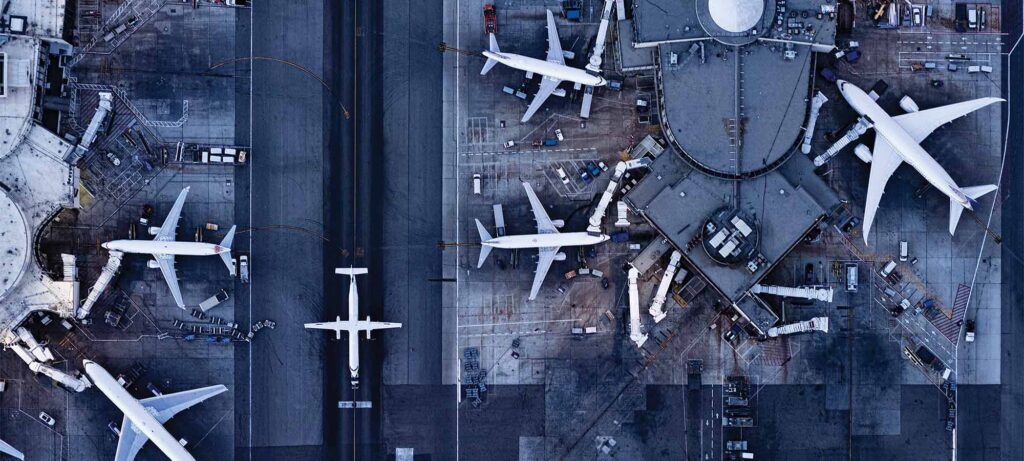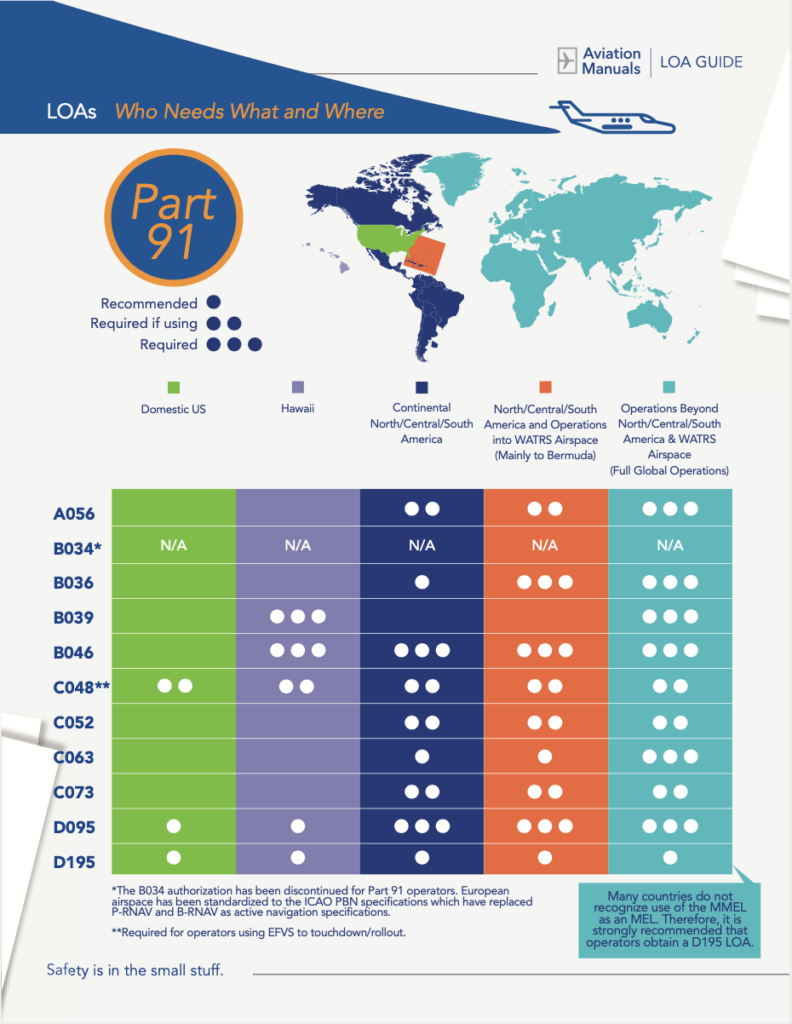LOAs. Letters of Authorisation. We have mentioned before about how to get an LOA approved by the FAA. You can read that here.
This post is less about the process of getting them and more about what you actually need them for.
There are a lot of LOAs…
First up, if you’re a Part 121 operator, or a non-US registered operator then this probably isn’t going to be very useful for you. Go read something more interesting like this story about a guy who definitely didn’t have an LOA for his operation.
For those it does apply to – you need an LOA for any operation which needs a “long term, specific permission”. It lets you do stuff, and what you are approved to do via your LOAs is recorded in your Opspec. Any specific operation probably needs an LOA which is why there are a lot of them, and also why it can get confusing trying to work out what you need – when, where and for what.
Now, we find the folk at AviationManuals really helpful with all this. They have a great (free) guide on how to get LOAs and it includes a handy bunch of tables which show you what you need for where and for what. Like this one for Part 91 ops.
Here is a quick rundown on the main LOAs you might need for your operations. If you still have questions afterwards then you know who to go ask for more info.
So, the ones to know.
Like we said, there are a lot of LOA options. The “big ones” that you are probably going to need are these…
A056
This is your Datalink Communications LOA (for CPDLC / ADS-C). If you have datalink systems installed and plan to use them outside of the US then you need this LOA. If you are Part 91 and only plan on using your datalink domestically then you don’t need an LOA.
This is not constrained by altitudes but rather to where FANS 1/A+ is mandated. If you think you will go through an airspace with a Datalink mandate, then having this LOA is probably a good idea.
B036
Oceanic and Remote Operations (RNP-10 / RNP-4 / RNP-2). This one looks at stuff like the long range navigation systems you have onboard, and your procedures for using it.
If you are planning on flying in oceanic and remote airspace, and in some spots in the Gulf of Mexico then you are going to need this LOA.

Still a bit blurry on what you need?
B039
Flights in the NAT HLA will want this LOA. It lets you put an ‘X’ in item 10a on your flight plan – confirming that your aircraft meets the new RNP10 PBN specifications (instead of the old MNPS stuff) and again, that procedures and training is in place.
Now, because this is a little more than just what equipment you got, in order to get LOA B039, you are also going to need a B036 which covers the Oceanic stuff and a B046 which covers the RVSM stuff – two other things you need to know about if you are flying across the big, reduced separation, remote oceanic area that is the NAT HLA.
You might have a B054 instead of the B036 (B054 covers Oceanic and Remote airspace using a single LRNS).
B046
The RVSM LOA.
RVSM airspace is between FL290 and FL410. Even if you plan on flying above this, it is probably necessary to have the LOA for RVSM because there is a good chance you will, at some point, route through it or potentially have to fly in it if you are too heavy, or meet some mean turbulence or something.
Now, for US ops you don’t need RVSM authorisation if you have ADS-B installed. Since January 2019 you are automatically authorised so long as you have ADS-B Out fitted (which is compliant with 14 CFR 91.227) and a few other things… one of which is that you don’t operate outside the USA.
So if you’re planning on taking a trip beyond the USA into Mexico or Canada, or further, then you are going to need this LOA.
The C0…s
The big Cs to think about getting are 52, 63 and 73. These give you the authorisation to fly things like RNAV (GNSS) approaches, RNAV and RNP Terminal Operations and VNAV instrument approach and approaches which use an MDA as a DA/DH.
ILS approaches are still a fair old way off becoming obsolete (mainly because of the problems with GPS jamming affecting aircraft capability to fly satellite based approaches), but having the authorisation to fly these might get you out of a spot of bother because there are a lot of parts to an ILS and they do breakdown from time to time.
And the future of navigation is satellite based so it is probably time to think about getting these now, if you haven’t already.
D095
This is the one you need if you want to use a Master Minimum Equipment List (MMEL) as a Minimum Equipment List (MEL).
We talked about that a bit here. The best plan is really to just get an MEL sorted though because the FAA are looking to change the rules on this, and the D095 actually expires fairly soon. Plus, if you fly internationally and only have an MMEL it can get very messy, even with the LOA.

Got what you need to go where you want to go?
Common Questions
We have covered the basics of what these main LOAs cover. Here are some answers to questions we have seen pop up from time to time.
What is an LOA and do I need it?
Go back to the top and read it all again.
How do I get an LOA?
I am still confused, who can I talk to?
Talk to these people, they know a lot.
What does “getting an LOA” require?
An LOA is an authorisation to carry out a specific sort of operation. That means you are probably going to need
a) the equipment required for that operation,
b) procedures within your company which refer to that operation, and
c) certain training for your crew related to that operation (which might be required yearly).
So if you are considering taking on ‘some sort of operation’, looking into the requirements for the LOA in advance is a good plan – just having the equipment will not tick all the LOA boxes by any stretch, and an LOA can take several months to be approved.
I am flying internationally but plan to route above the NAT HLA say at FL430, what LOAs do I have to have?
The simple answer if we are just talking “have to have” is B036 or B054 which covers you for the Oceanic and Remote operations.
- However, you might also want the RVSM one because there is a fairly good chance you will, at some point on that flight, be in RVSM airspace. So throw a B046 in as well.
- There is also a good chance you will find yourself in some Datalink mandated airspace – it is pretty much all over Europe and beyond – so your A056 might be a good idea.
- If you have those and are able RNP-10 then you really might as well get the B039 as well since you meet the requirements for it and it might save you a whole bunch of fuel (and trouble) if you have it “just in case”.
That’s all we’ve got to say on the LOA.
For now anyway, but if you think of something we haven’t covered then get in touch or drop those helpful folk at AviationManuals an email.
Our final tip – be careful ‘googling’ LOA because there are some pictures you really don’t want to see of the Loa Loa ‘eye worm’.
More on the topic:
- More: LOA Guide for US Operators
- More: That MMEL Thing: Here’s an Update
- More: US LOAs: What’s the point of the C052?
- More: Kathmandu got RNP-AR (and so should you)
- More: Introducing MEL: A guide to Minimum Equipment Lists
More reading:
- Latest: Mexico Customs Surprises: Pills, Vapes, and Laptop Rules
- Latest: Greenland NAT Alternates: Dec 2025 Update
- Latest: Crossing the Quiet South: From Australia to Argentina
- Safe Airspace: Risk Database
- Weekly Ops Bulletin: Subscribe
- Membership plans: Why join OPSGROUP?












 Get the famous weekly
Get the famous weekly 






JET RVSM
FLY Compliance
Fly RVSM
Source One Aviation Compliance
These are all very good experienced companies and more cost effective.